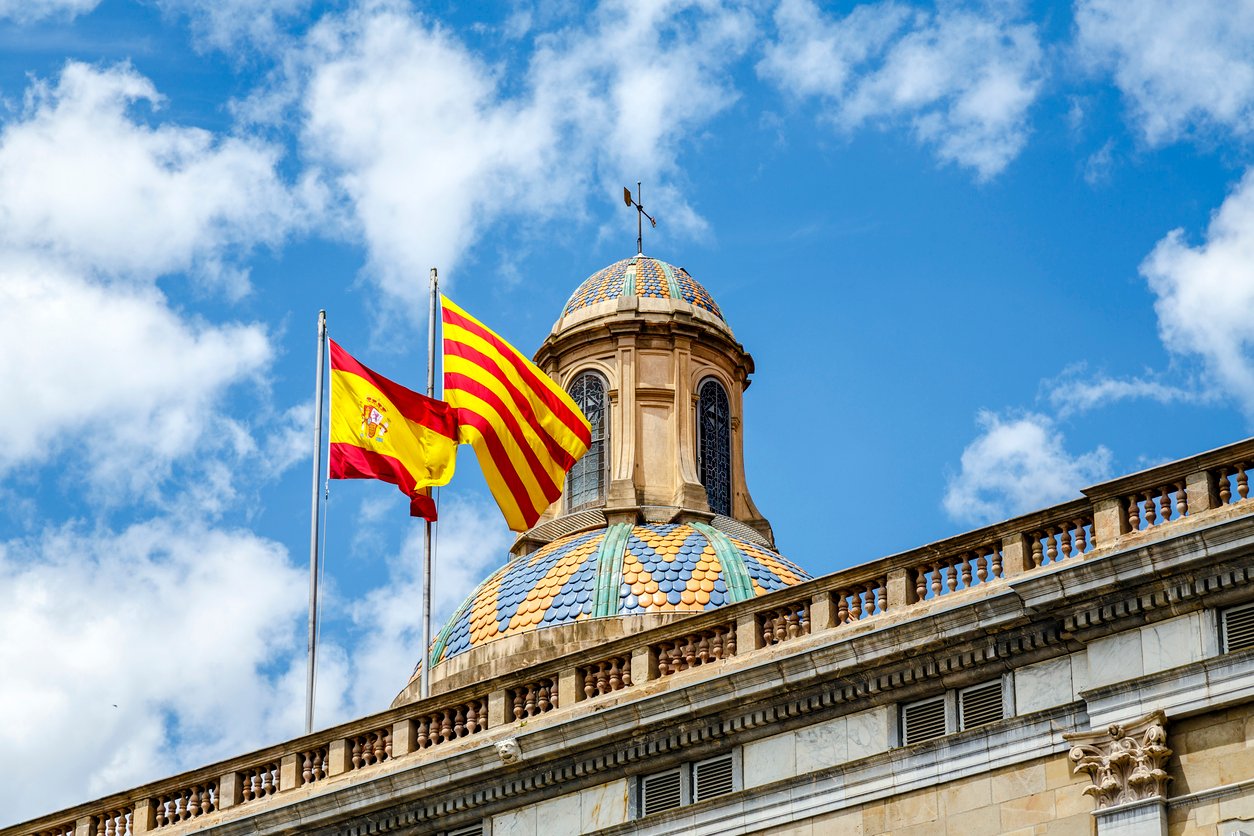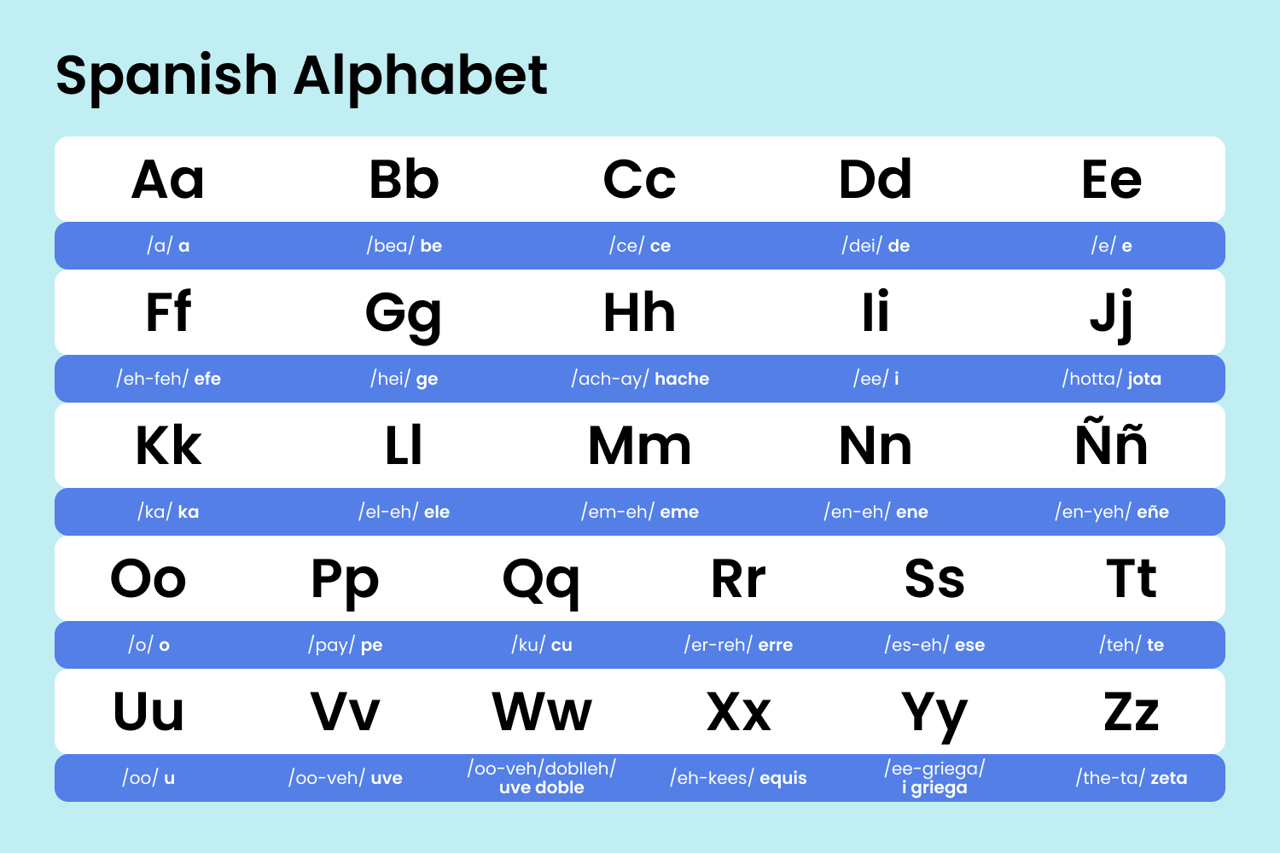Difference Between Spanish and Catalan Languages


When most people think of Spain, they think of Spanish. But in Catalonia and a few other regions, Catalan is just as central to everyday life.
Though both Spanish and Catalan come from Latin, they’ve developed into two separate languages with their own grammar, pronunciation, and vocabulary.
Whether you're visiting, living in the region, or simply curious, learning about Catalan alongside Spanish can help you better engage with locals and appreciate the unique character of Catalonia.
Differences Between Spanish and Catalan Languages

Catalan and Spanish are not the same.
Catalan and Spanish are two distinct languages, each with its own history, grammar, and cultural significance.
While both are Romance languages, Spanish belongs to the Iberian-Romance branch (like Portuguese), whereas Catalan comes from the Gallo-Romance branch (like French).
1. Phonology - How Do They Sound Different?
Phonology refers to the sound system of a language—and this is one of the biggest differences between Catalan and Spanish. While both use the Latin alphabet, they sound quite different in speech.
Vowel Sounds
Catalan has 8 vowel sounds, including both open and closed vowels, while Spanish has just 5 basic vowel sounds that stay consistent regardless of stress.
| Sound Type | Catalan Example | Spanish Equivalent |
|---|---|---|
| Open e (è) | què (what) | No direct match |
| Closed e (é) | café (coffee) | café (same spelling, simpler sound) |
| Open o (ò) | mòbil (mobile) | No direct match |
| Closed o (ó) | cotó (cotton) | algodón (cotton – different word) |
| Schwa (ə) | casa → /kazə/ | Spanish: /kasa/ |
Spanish vowels: a, e, i, o, u — all pronounced clearly and consistently.
Unique Consonant Sounds in Catalan
Catalan also includes consonant combinations and sounds not found in Spanish:
"tz" → like ts in dotze ("twelve")
"tg" → like dge in metge ("doctor")
"tx" → like ch in cotxe ("car")
"ll" → pronounced like "yuh" in Catalan vs "ly" in Spanish
| Word | Catalan Pronunciation | Spanish Equivalent | English Meaning |
|---|---|---|---|
| cotxe | /kotʃə/ | coche | car |
| metge | /metdʒə/ | médico | doctor |
| dotze | /dot͡sə/ | doce | twelve |
| Catalunya | /kətəˈluɲə/ | Cataluña | Catalonia |
2. Grammar - How Sentence Structures Differ
While both Spanish and Catalan follow similar grammatical foundations, Catalan tends to be a bit more complex—especially in verb conjugation and pronoun use.
1. Verb Conjugation
Catalan often uses the periphrastic past tense, while Spanish prefers the simple past. The Catalan version uses the verb anar (“to go”) + infinitive.
| Meaning | Catalan (Periphrastic Past) | Spanish (Simple Past) |
|---|---|---|
| I sang | vaig cantar | canté |
| You ate | vas menjar | comiste |
| We arrived | vam arribar | llegamos |
Catalan does have a simple past, but it’s mostly reserved for formal or literary use.
2. Pronouns
Catalan includes special pronouns like en and hi, which don't exist in Spanish.
en → replaces phrases introduced by de (of/from)
Tinc tres llibres. → En tinc tres. (I have three of them.)
hi → replaces phrases with a (to/in/at)
Vas a la platja? → Sí, hi vaig. (Yes, I’m going there.)
These pronouns make Catalan sentence structure more compact, but also trickier for learners.
3. Word Order and Sentence Structure
While both languages follow subject-verb-object order, Catalan often places pronouns before or within the verb:
| English | Catalan | Spanish |
|---|---|---|
| I love you | T’estimo | Te quiero |
| I give it to you | Te’l dono | Te lo doy |
Catalan combines pronouns into a single form, often contracting them and attaching to the verb, which changes rhythm and structure.
3. Vocabulary
Catalan and Spanish share a Latin base, so many words look or sound similar, but there are still plenty of differences. Some words are entirely different, some are false friends, and others resemble French or Italian more than Spanish.
1. Common Vocabulary Differences
Here are some everyday words that differ completely between Catalan and Spanish.
| English | Catalan | Spanish |
|---|---|---|
| Apple | poma | manzana |
| Cheese | formatge | queso |
| Dog | gos | perro |
| Car | cotxe | coche |
2. Catalan Words with French/Italian Influence
Catalan is part of the Gallo-Romance family, like French and Italian, so some words are closer to those languages than to Spanish.
| English | Catalan | French | Spanish |
|---|---|---|---|
| Strawberry | maduixa | fraise | fresa |
| Hat | barret | béret | sombrero |
| Window shutter | porticó | portique | persiana |
| To speak | parlar | parler | hablar |
These words don’t just sound different, they often look more French than Spanish, which shows Catalan’s distinct evolution.
3. False Friends: Same Look, Different Meaning
Some Catalan and Spanish words look nearly identical but have different meanings or uses. These are called false friends, and they can easily trip up learners who assume the words are the same.
| Catalan Word | Meaning in Catalan | Similar Spanish Word | Meaning in Spanish |
|---|---|---|---|
| embarasada | embarrassed | embarazada | pregnant |
| constipat | to have a cold | constipado | to be congested |
| tela | situation, fuss (informal) | tela | fabric |
Even native Spanish speakers sometimes misinterpret these Catalan words due to their familiar forms.
4. Alphabet and Orthography: How Spelling Differ
Catalan and Spanish both use the Latin alphabet, but they differ in how words are spelled and which characters are used.
Special Characters
Catalan includes unique characters that Spanish doesn’t use.
| Character | Catalan Example | Spanish Equivalent | Sound / Purpose |
|---|---|---|---|
| ny | Catalunya | ñ → Cataluña | Like the English “ny” in canyon |
| ç | façana (facade) | Not used in Spanish | Soft “s” sound |
| · | paral·lel | Not used in Spanish | Separates double “l”s to avoid “y” sound |
In Catalan, ny replaces the Spanish ñ, and the “ç” (cedilla) softens the “c” sound before a, o, or u. The interpunct (·) between “l”s is unique to Catalan and changes how the word is read aloud.
Simplified Word Endings
Catalan often drops final vowels in masculine past participles or adjectives, giving words a shorter appearance. This gives the language a more clipped or concise appearance in writing.
| English | Spanish | Catalan |
|---|---|---|
| Busy | ocupado | ocupat |
| Interested | interesado | interessat |
| Painted | pintado | pintat |
Historical Background of Catalan and Spanish

As mentioned, Catalan and Spanish both evolved from Latin but developed along separate regional and political paths.
Catalan originated in the northeast of the Iberian Peninsula and was influenced by nearby Gallo-Romance languages like French and Occitan. It became the language of literature, law, and administration during the Middle Ages, especially under the Crown of Aragon.
Spanish, by contrast, developed in the central and northern regions of Spain, particularly in the Kingdom of Castile. As Castile expanded its territory, especially after the Reconquista, the influence of Spanish grew. The language became increasingly standardized and, following colonization, spread widely across Latin America and other parts of the world.
Geographical Distribution
Spanish is spoken across Spain and much of Latin America, with over 480 million native speakers and 560 million total speakers worldwide. It’s the official language in more than 20 countries. Spanish is one of the most spoken languages globally.
Catalan is mainly spoken in Catalonia, Valencia, the Balearic Islands, and Andorra, where it's the only official language. Smaller communities in France and Italy also speak it. Around 10 million people understand Catalan, and about 9 million speak it.
Should I Learn Spanish or Catalan?
Whether you should learn Spanish or Catalan depends on your goals and where you will use the language. Spanish is a global language spoken by over 500 million people across the world. It’s very useful for travel, business and communication in many countries, especially in Latin America and Spain.
Catalan is more regional. If you plan to live, work or spend a significant amount of time in Catalonia, Valencia or the Balearic Islands, learning Catalan can be very useful. It’s also a way to connect more with the local culture and community where Catalan is used in social and official contexts. While Spanish will open more doors globally, Catalan will give you a unique cultural experience in specific regions of Spain.
In terms of difficulty, both languages are relatively accessible for English speakers, but Spanish might be a bit easier to learn due to the abundance of resources and its simpler grammar. Catalan, while not overly difficult, has more complex verb conjugations and unique sounds that might take some getting used to. However, if you already know some Spanish or French, picking up Catalan can be easier since it shares similarities with both languages.
Final Thoughts
Did you know that Barcelona street signs are often written in Catalan first? This is a small but important detail that highlights the city’s commitment to preserving its language and culture.
At BarcaTrips, we have more thorough guides on the languages, history, and culture of Barcelona. If you need any tips on the best attractions, packing essentials, and more, our resources will help you make the most of your visit.
FAQs
Is Catalan a Spanish dialect?
No, Catalan is not a Spanish dialect. It is a language with its own history, grammar and vocabulary. Both languages share Latin roots but Catalan is part of the Gallo-Romance branch (like French) and Spanish is part of the Iberian-Romance branch (like Portuguese).
Can I get by with only Spanish in Catalonia?
Yes, you can get by with only Spanish in Catalonia. Most people in Catalonia are bilingual and speak both Spanish and Catalan. But learning a few basic phrases in Catalan is appreciated by locals and will make your experience even better, especially in rural areas where Catalan is more spoken.
How similar is Catalan to French?
Catalan and French are similar because they both come from the Gallo-Romance branch of languages. They have similar vocabulary and grammar but are different languages. Knowing French will make it easier to learn Catalan as there are many cognates (words that look and sound the same) between the two.
Can Catalan and Spanish understand each other?
Catalan and Spanish speakers can understand each other to some extent, especially in writing, because of shared Latin roots and similar grammar. But the two languages have enough differences in vocabulary, pronunciation and grammar that they are not mutually intelligible without some prior knowledge or exposure.


